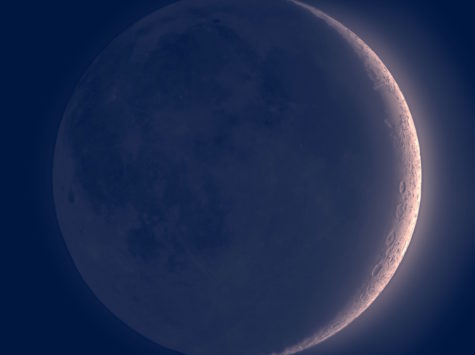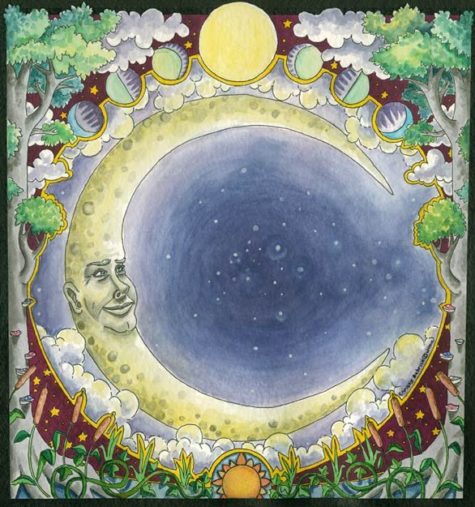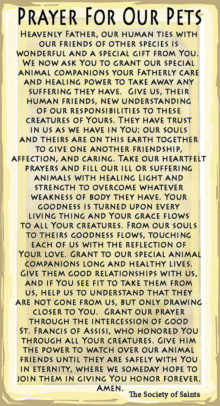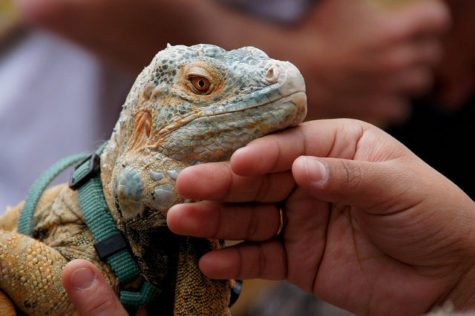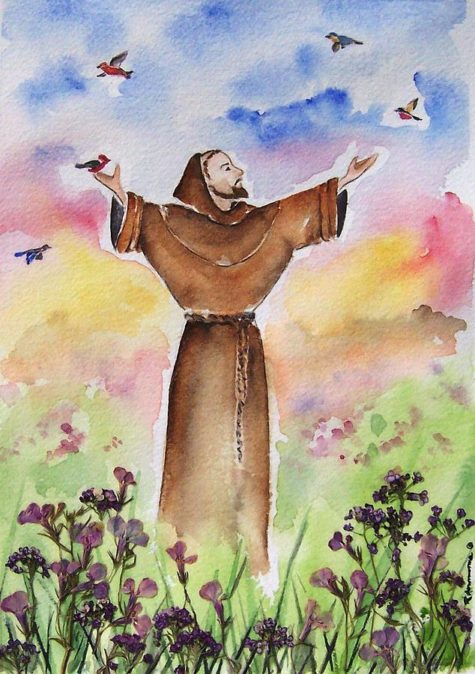The new moon is sacred to the goddess Hekate, and these cakes are ideal for use in rituals honoring her, as well as for Hekate Suppers, or an offering to leave at a crossroads. Many of the ingredients are sacred to the Dark Goddess, additionally there are 3 x 3 ingredients, using the number three which is also sacred to Hekate.
- 1 1/2 cups flour
- 1/2 cup of soft butter
- 1/4 cup of honey
- 1/2 tsp baking soda
- 1/2 tsp salt
- 2 tbsp black poppy seeds
- 1 egg
- 1/2 tsp almond extract
- 1 tsp anise seeds
Directions:
(If possible use organic ingredients and free-range fertile eggs.) Sift the flour, salt and baking soda together. Cream the butter, honey and egg. Blend the two mixtures together and add the remaining ingredients. Shape into small thin crescent shapes. Place with space between the shapes to allow for spreading during baking on a cool, oiled baking tray.
Bake at 350 F for about 12 minutes or until lightly golden.
~Sue Bowman, Keys to the Crossroads
The Dark of the Moon, those few days where the moon is not visible, just prior to the rebirth of the New Moon, are controversial. Some traditions will not cast spells during this period. Others. particularly those devoted to Dark Moon spirits like Hekate or Lilith, consider this a period of profound magickal power which may be exploited as needed.
In Arabic folk custom, it’s recommended that you keep an eye on moon phases. Whatever you find yourself doing at the moment when you first catch a glimpse of the brand new moon is the right thing for you to do.
More New Moon Lore:
- Almost every culture believed that if the New Moon came on Monday (Moon-day) it was a sign of good weather and good luck.
- Two new moons in one month were said to predict a month’s bad weather.
- Any new moon on a Saturday or Sunday was said to predict rain and general bad luck.
- Good luck will come your way if you first see the New Moon outside and over your right shoulder. You can also make a wish that will be granted. The best luck came from looking at the Moon straight on.
- In some parts of Ireland, upon seeing the New Moon, people bowed or knelt, saying: O Moon, leave us as well as you found us.
- Upon seeing the New Moon, bow to her and turn over the silver or coins in your pocket. This will bring you luck in all your affairs.
- If the New Moon is seen for the first time straight ahead, it predicts good fortune until the next New Moon.
- To encourage luxuriant growth, cut your hair on the New Moon.
- Wood cut at the New Moon is hard to split.
- The English had a saying that if a member of the family died at the time of the New Moon, three deaths would follow.
- Although the Koran expressly forbids worshiping the Sun or Moon, many Muslims still clasp their hands at the sight of a New Moon and offer a prayer.
From: Moon Magick and other sources
Traditionally, the each of the first ten days after the New Moon has it’s own attributes and qualities. Here’s the folklore on each of those days:
First Day: A good day for new beginnings. To fall ill on this day means the illness might last a long while. A child born at this time will be happy, prosperous, and live long.
Second Day: A good day for buying and selling and for starting a sea voyage. Also a good time for hoeing and sowing.
Third Day: Crimes committed on this day are certain to be found out.
Fourth Day: A good day for building, construction, and home renovations. Also a good day to be born on if you want to enter politics.
Fifth Day: The weather on this day gives an indication of what to expect for the rest of the month. It’s a good day for a woman to conceive.
Sixth Day: The best day for hunting and/or fishing.
Seventh Day: A good day for meeting and falling in love.
Eighth Day: A sickness begun on this day was thought to be likely to cause death.
Ninth Day: If the Moon shines in your face on this day, you may have twisted features or go mad.
Tenth: People born on this day are likely to be travelers or have a restless spirit.
Other Days: A New Moon on a Saturday or Sunday indicates rain, as does seeing the outline of the whole Moon at the same time as a New Moon. Furthermore, should the horns of a New Moon point upwards then the weather will be fair for the next lunar cycle, but if they point down, you can expect rain.
Noah Webster, America’s first lexicographer, was born on October 16, 1758. We remember Webster as the author of the first American dictionary, but he was also the first authority to advocate American English. His American Spelling Book, published in 1783 (later known as Webster’s Elementary Spelling Book), was the first to Americanize the spelling of English words such as colour and labour by dropping the u. He also espoused American pronunciation and usage.
In a very real sense, Webster gave us the language that Americans think of as English. An estimated 60 million copies of Webster’s speller were sold during its first hundred years in print. In 1828, Webster’s American Dictionary of the English Language was published, with 12,000 more words and about 40,000 more definitions than any previous English dictionary.
This is an excellent day for divination involving the use of letters, words, or books. Here are a few links to get you started:
- Dictiomancy – divination by randomly opening a dictionary
- Alphabetical divination – divination by random choosing of the letters of the alphabet.
- Literomancy – divination by a letter in a written language
- Notarikon – divination by initials
- Onomancy – divination by letters in a name
Found at: Almanac.com
In ancient Roman culture, felicitas is a condition of divinely inspired productivity, blessedness, or happiness. Felicitas could encompass both a woman’s fertility, and a general’s luck or good fortune. The divine personification of Felicitas was cultivated as a goddess.
Although felicitas may be translated as “good luck,” and the goddess Felicitas shares some characteristics and attributes with Fortuna, the two were distinguished in Roman religion. Fortuna was unpredictable and her effects could be negative, as the existence of an altar to Mala Fortuna (“Bad Luck”) acknowledges. Felicitas, however, always had a positive significance.
In Ancient Rome
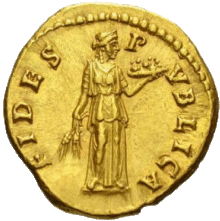 Felicitas had a temple in Rome as early as the mid-2nd century BC, and during the Republican era was honored at two official festivals of Roman state religion, on July 1 in conjunction with Juno and October 9 as Fausta Felicitas.
Felicitas had a temple in Rome as early as the mid-2nd century BC, and during the Republican era was honored at two official festivals of Roman state religion, on July 1 in conjunction with Juno and October 9 as Fausta Felicitas.
Felicitas continued to play an important role in Imperial cult, and was frequently portrayed on coins as a symbol of the wealth and prosperity of the Roman Empire. Her primary attributes are the caduceus and cornucopia. The English word “felicity” derives from felicitas.
On July 1 and October 9, Felicitas received a sacrifice in Capitolio, on the Capitoline Hill, on the latter date as Fausta Felicitas in conjunction with the Genius Publicus and Venus Victrix. These observances probably took place at an altar or small shrine, not a separate temple precinct.
The Acts of the Arval Brothers (1st century AD) prescribe a cow as the sacrifice for Felicitas. Pompey established a shrine for Felicitas at his new theater and temple complex, which used the steps to the Temple of Venus Victrix as seating. Felicitas was cultivated with Honor and Virtue, and she may have shared her shrine there with Victory, as she did in the Imperial era as Felicitas Caesaris (Caesar’s Felicitas) at Ameria.
Celebrating Felicitas Today:
“Felicitas’ themes are kindness, charity, love, romance, joy, success and luck. Her symbols are greetings (greeting cards). This Roman Goddess brings happiness, success, and good fortune whenever someone salutes another with good words or amiable deeds. She comes to us today to energize late fall and early winter with the transformational power of kindness.
Her festival day gives us an opportunity to shower anyone and everyone with cheerful trinkets, kind acts, and gentle words to lift people’s spirits. By looking for Felicitas for help, we can bring joy to people who might otherwise be feeling a case of autumn blues.
Here is an idea:
Look for, or make, some humorous greeting cards to send to folks you know would appreciate the thought. Lay your hands on them and invoke Felicitas’s blessings in any way that feels right.
To improve the effect further, anoint the cards with rejuvenating aromatic oils that match the recipient’s needs (such as pine for money, rose for love or peace, cinnamon for luck, sandalwood for health, and lavender to combat depression). This way, when they open that card, the magic and the aroma will be released together to bless, energize, and bear Felicitas’s greetings along with your heartfelt wishes!”
Sources: 365 Goddess, and Wikipedia
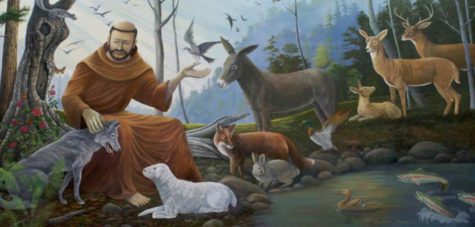
The blessing of pets and animals is a Catholic holy day often celebrated on October 4, the feast of St. Francis of Assisi, or on a Sunday near that date.
In the Scriptures, the act of blessing means ‘the imparting of power or life.’ The person performing the blessing is mediating that power from God or Christ to the person performing or the animal involved. To bless is more than an expression of goodwill and caring. To bless is to impart God’s power in person! The blessing of each animal, by name, means that health, healing and life are being mediated from God for the benefit of the animal in its relationship with its human partners. Be careful not to reinforce the separation of human animals and other animals by this blessing. Instead, consider reinforcing our common kinship by blessing ALL animals–human and otherwise.
A Prayer For Our Pets
Heavenly Father, our human ties with our friends of other species is wonderful and a special gift from you. We now ask you to grant our special animal companions your fatherly care and healing power to take away any suffering they have.
Give us, their human friends, new understanding of our responsibilities to these creatures of yours. They have trust in us as we have in you; our souls and theirs are on this earth together to give one another friendship, affection, and caring.
Take our heartfelt prayers and fill our ill or suffering animals with healing light and strength to overcome whatever weakness of body they have.
Your goodness is turned upon every living thing and your grace flows to all your creatures.
From our souls to theirs goodness flows, touching each of us with the reflection of your love.
Grant to our special animal companions long and healthy lives. Give them good relationships with us, and if you see fit to take them from us, help us to understand that they are not gone from us, but only drawing closer to you.
Grant our prayer through the intercession of Good St. Francis of Assisi, who honored you through all your creatures. Give him the power to watch over our animal friends until they are safely with you in eternity, where we someday hope to join them in giving you honor forever.
Amen
Blessing of All the Animals: A Sermon
Here’s a transcript of a catholic sermon by David Rhoads, often used as part of the services for the Blessing of the Animals. I thought it might be interesting to use it as a sort of template for any blessings that I might want to do today. While I am not a catholic, or even a follower of any christian religion, I did think it had possibilities as a jumping off point, and with some creative changes, it might be quite pagan and wonderful.
So, here it is, I’d love to see what you can do with it:
And God said, “Let the waters bring forth swarms of living creatures, and let birds fly above the earth across the dome of the sky.” So God created the great sea monsters and every living creature that moves, of every kind, with which the waters swarm and every winged bird of every kind. And God saw that it was good. And God blessed them, saying, “Be fruitful and multiply and fill the waters in the sea, and let birds multiply on the earth. . . . And God said, “Let the earth bring forth creatures of every kind: cattle and creeping things and wild animals of the earth of every kind.” And it was so. God made the wild animals of the earth of every kind, and the cattle of every kind and everything that creeps upon the ground of every kind. And God saw that it was good
~Genesis 1: 20-25
First, I want to address you varieties of dogs and cats and other creatures who are here today. And I want to speak with you fish and ferrets and hamsters and parakeets and snakes brought here today by your human companions. You are here for your own sake, and you also represent all those who are not here today, animals of every kind—cattle and goats and horses and elephants and bees and cougars and crocodiles and puffer fish and eels and insects—so many we cannot name them all.
I want to announce the good news to all you creatures. I want you to know that God loves you. God loves you for your own sake—and not because of what you can do for humans.
You are good in yourselves. The good book tells us that when God created you—fish of the sea and birds of the air and creatures of the land—God looked at all God had created, and God saw that “indeed, it was very good!”
When God created you, God blessed you. God told you to “Be fruitful and multiply and fill the earth.”
God created you in huge swarms and in great diversity. God wants all of you to survive and to thrive on Earth.God created the world for you, so that you have what you need to live.
The psalmist tells us that God made the rain to water the trees, the trees for you birds to nest, the grass for you cattle to graze, and the crags as a refuge for you mountain goats. God wants you to receive your “food in due season” and to be “filled with good things.”
The Bible tells us that when the flood came, God rescued each of your species through Noah in the ark. And God made a covenant with you fish of the sea and birds of the air and domestic animals and all animals on Earth to protect you for the future. God made the first “endangered species act.”
Just like us, you are called to worship God. The hills are to clap their hands. The fields are to exalt. You cattle and dogs and cats are to praise God by being who you are and exalting in it. John the seer had a vision in which he heard the entire creation—everything in heaven, on the earth, under the earth and in the sea—cry out in praise: “Blessing and honor and glory and power be to our God and to the lamb forever and ever.”
We human animals need to confess to you that we have systematically mistreated you, depleted your numbers, destroyed you, slaughtered you, crowded you out, neglected you, dealt with you as commodities in our quest for comfort and ease. We have not seen you as God’s creatures. We have not shown proper reverence or respect. Against God’s will, we have not set limits upon ourselves so that you might live and thrive. What we have done! We are sorry!
You who are here today are so fortunate because you have human companions who care for you. But so many of your cousins are threatened with extinction—snow leopards and timber wolves and green sea turtles and condors and paddlefish and fin whales among so many others. We humans may so crowd out or deplete these kin of yours that not a single one of them will ever again exist on Earth.
When we destroy you and diminish you in these ways, we not only compromise your ability to survive, we also stifle your capacity to praise God. Along with all creation, you are groaning in labor pains, waiting for the revelation of children of God who will care for creation and make provisions for you to thrive.
Now I want to address you human creatures. I want to announce the good news to you also. God loves you. God loves you for your own sake and wants you to thrive. When God made you; God saw that this too was good.
God said also to you: “Be fruitful and multiply and fill the Earth”. Yet we have already done this! So we need to find ways to limit the impact of our species, because God did not mean for us to crowd out the rights of other creatures to be fruitful and multiply also. In developed countries, we have become like an infestation—taking over land and destroying habitats and devouring species and infiltrating homes and migratory routes of so many other animals—and we need to learn our limits and exercise restraint.
God even created us humans with a special responsibility—to exercise dominion. This does not mean that we are to exercise domination over other creatures or to exploit them for human mis-use. Rather, we are to delight in other creatures, as God does, and respect and care for them. Our love for creation is the only basis for our right use of creation. We are to exercise dominion as servants of creation. As Jesus has said, we are not to lord over anyone, but be as slaves to all. We are to take responsibility for all creatures, to serve their needs, and to work to preserve them.
And we are to do this not with a sense of superiority but in solidarity with all other creatures. We were created to be together, to be companions to one another, to thrive all together. All animals are our cousins, our kin. And God made a covenant with us and with all other animals together. Admit it, we humans are also animals, primate mammals.
And Jesus was a mammal. Jesus was born and lived in solidarity with all of life. Jesus lived to care about all who were oppressed and made vulnerable and marginalized by society; and right now that includes most creatures, not just humans. Jesus died in order that God might reconcile to God’s self all things in creation.
In response to God’s love, we are freed to behave in ways that enable all of life to thrive together. You do not need to prove anything. You can set limits on yourselves. You can simplify your lifestyle so that others may survive and thrive. You can become aware the effects of your actions on other creatures and curtail your activity. You can act to establish and restore safe homes and habitats for those animals that are endangered.
Now I want to address all of you creatures together. I had this vision in a dream during sleep at night. I was in the front row of a cathedral looking at the scene before me during a service of communion. I saw the priest passing bread to the first person kneeling at the communion railing. As I looked, the next figure at the railing was a snake! It was curled at the bottom with its back arching up over the rail and with head straining forward to receive the grace of Christ. The next figure was another person. Next was a raccoon with paws up on the communion rail leaning forward to receive the grace of Christ. Then I saw a bird perched on the corner of the railing eating bread crumbs.
As I finished surveying this scene in my dream, suddenly the side walls of the cathedral fell away and outside was thick foliage of forest and jungle on each side with all manner of wild animals roaming around. In this moment, it seemed as if walls of separation had been removed and there was a seamless web of all creation praising God and exalting in the grace of Christ.
From the time I awoke from that dream until this day, I have never been able to think of worship in the same way again. I now see all of Earth as the sanctuary in which we worship, and I see myself invoking and confessing and giving thanks and praising God and offering myself in solidarity with all of life. May that vision also be your vision.
You who are here today are very fortunate because you and have a relationship of love and care and loyalty between yourself and your human or your pet companion. You model how all relationships between humans and other animals should be. We wish to project this relationship as the model for our human relationship with all animals. May we care about all animals as we care for our companions at home.
I invite you all to come forward for a blessing. Sometimes when we have a service for the Blessing of the Animals, we bless only the non-human animals, as if we ourselves are not also animals. Therefore, as an expression of solidarity with each other, I invite all of you—non-human animals and human animals alike—to come for a blessing together. We bless you as companions together and we bless your relationship:
“May God bless each of you with health and safety and well-being and long life. And may God bless your relationship together so that it may be filled with love and joy.”
Many churches celebrate the Feast of St Francis of Assisi on October 4 each year. The feast commemorates the life of St Francis, who was born in the 12th century and is the Catholic Church’s patron saint of animals and the environment. It is a popular day for pets to be “blessed”.
About St Francis
St. Francis of Assisi (1182-1226) was the founder of the Franciscan Order. The son of a wealthy merchant named Pietro di Bernardone, he publicly denounced his father’s wealth in 1206 and dedicated his life to prayer and serving the poor. Pope Innocent III eventually gave Francis and his followers permission to preach, and he ordained Francis a deacon. The followers of Francis were called Friars Minor, or “the lesser brethren.” Francis died on October 3, 1226, and was canonized in 1228.
Text from his Sermon to the Birds:
“My little sisters, the birds, much bounden are ye unto God, your Creator, and always in every place ought ye to praise Him, for that He hath given you liberty to fly about everywhere, and hath also given you double and triple rainment; moreover He preserved your seed in the ark of Noah, that your race might not perish out of the world; still more are ye beholden to Him for the element of the air which He hath appointed for you; beyond all this, ye sow not, neither do you reap; and God feedeth you, and giveth you the streams and fountains for your drink; the mountains and valleys for your refuge and the high trees whereon to make your nests; and because ye know not how to spin or sow, God clotheth you, you and your children; wherefore your Creator loveth you much, seeing that He hath bestowed on you so many benefits; and therefore, my little sisters, beware of the sin of ingratitude, and study always to give praises unto God.”
-Saint Francis of Assisi (c.1220)
From: Almanac.com Continue reading
Here is a traditional recipe for the Mid-Autumn Moon Cake
Filling:
- 1 can (17-1/2 ounces) lotus seed paste
- 1/4 cup finely chopped walnuts
Dough:
- 4 cups all-purpose flour
- 1/2-cup non-fat dried milk powder
- 3 teaspoons baking powder
- 1/2 teaspoon salt
- 3 eggs
- 1 cup sugar
- 1/2 cup solid shortening, melted and cooled
- 1 egg yolk , lightly beaten
- Mix lotus seed paste and walnuts together in a bowl; set aside.
Sift flour, milk powder, baking powder, and salt together into a bowl. In large bowl of electric mixer, beat eggs on medium speed until light and lemon colored. Add sugar; beat for 10 minutes or until mixture falls in a thick ribbon. Add melted shortening; mix lightly. With a spatula, fold in flour mixture. Turn dough out on a lightly floured board; knead for 1 minute or until smooth and satiny. Divide dough in half; roll each half into a log. Cut each log into 12 equal pieces.
To shape each moon cake, roll a piece of dough into a ball. Roll out on a lightly floured board to make a 4-inch circle about 1/8-inch thick. Place 1 tablespoon of lotus seed paste mixture in center of dough circle.
Fold in sides of dough to completely enclose filling; press edges to seal. Lightly flour inside of moon cake press with 2-1/2 inch diameter cups. Place moon cake, seam side up, in mold; flatten dough to conform to shape of mold. Bang one end of mold lightly on work surface to dislodge moon cake. Place cake on ungreased baking sheet. Repeat to shape remaining cakes. Brush tops with egg yolk.
Bake in a preheated 375 degree F. oven for 30 minutes or until golden brown. Transfer to a rack and let cool. Makes 2 dozen
Copyright Yan Can Cook, Inc. 1991.
- 1/4 cup sugar
- 2 egg yolks
- 1/2 cup salted butter
- 1 cup all-purpose flour
- 1 cup strawberry (or your favorite) jam
(traditionally red bean paste is used so if you want a more authentic version, you can use a can of red bean paste instead of the jam)
Directions:
- Preheat the oven to 375 degrees.
- Combine the butter, sugar and 1 egg yolk and stir.
- Mix in the flour.
- Form the dough into one large ball and wrap it in plastic wrap.
- Refrigerate dough for half an hour.
- Unwrap the chilled dough and form small balls in the palms of your hand.
- Make a hole with your thumb in the center of each mooncake and fill with about half a teaspoon of jam.
- Brush each cake with the other beaten egg yolk and place on a cookie sheet.
- Bake for about 20 minutes or just until the outside edges are slightly brown
Makes 24
Source: Unknown
The Mid-Autumn Festival, also known as the Moon Festival, is a popular East Asian celebration of abundance and togetherness, dating back over 3,000 years to China’s Zhou Dynasty. In Malaysia and Singapore, it is also sometimes referred to as the Lantern Festival or “Mooncake Festival.”
The Mid-Autumn Festival falls on the 15th day of the 8th lunar month of the Chinese calendar (usually around mid- or late-September in the Gregorian calendar), a date that parallels the Autumn Equinox of the solar calendar. The moon festival is celebrated on the full moon closest to the Autumn Equinox, which sometimes falls in October. This is the ideal time, when the moon is at its fullest and brightest, to celebrate the abundance of the summer’s harvest. The traditional food of this festival is the mooncake, of which there are many different varieties.
The Moon Festival is full of legendary stories. Legend says that Chang Er flew to the moon, where she has lived ever since. You might see her dancing on the moon during the Moon Festival. The Moon Festival is also an occasion for family reunions. When the full moon rises, families get together to watch the full moon, eat moon cakes, and sing moon poems. With the full moon, the legend, the family and the poems, you can’t help thinking that this is really a perfect world. That is why the Chinese are so fond of the Moon Festival.
The Moon Festival is also a romantic one. A perfect night for the festival is if it is a quiet night without a silk of cloud and with a little mild breeze from the sea. Lovers spend such a romatic night together tasting the delicious moon cake with some wine while watching the full moon. Even for a couple who can’t be together, they can still enjoy the night by watching the moon at the same time so it seems that they are together at that hour. A great number of poetry has been devoted to this romantic festival. Hope the Moon Festival will bring you happiness.
Farmers celebrate the end of the summer harvesting season on this date. Traditionally, on this day, Chinese family members and friends will gather to admire the bright mid-autumn harvest moon, and eat moon cakes and pomeloes together. Accompanying the celebration, there are additional cultural or regional customs, such as:
- Eating moon cakes outside under the moon
- Putting pomelo rinds on one’s head
- Carrying brightly lit lanterns
- Burning incense in reverence to deities including Chang’e
- Planting Mid-Autumn trees
- Collecting dandelion leaves and distributing them evenly among family members
- Lighting lanterns on towers
- Fire Dragon Dances
- Shops selling mooncakes, before the festival, often display pictures of Chang’e floating to the moon.
Stories behind the festival can be found at Widdershins:
The Moon Cake Uprising
In late Yuan Dynasty (1271 – 1368 AD), people in many parts of the country could not bear the cruel rule of the government and rose in revolt. Zhu Yuanzhang, founder of Ming Dynasty (1368 – 1644 AD), united the different resistance forces and wanted to organize an uprising. However, due to the narrow search by government, it was very difficult to pass messages.
The counselor Liu Bowen later though out the great idea of hiding notes with “uprise on the night of August 15th” in moon cakes and had them sent to different resistance forces. The uprising turned to be very successful and Zhu was so happy that he awarded his subjects with moon cakes on the following Mid-Autumn Festival. Since then, eating moon cakes has been a custom on Mid-Autumn Festival.
Sources: Wikipedia and Travel China Guide

